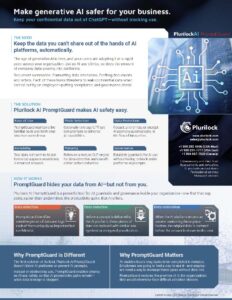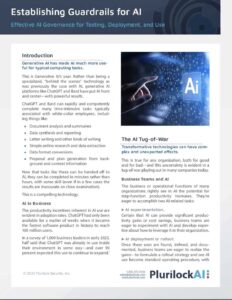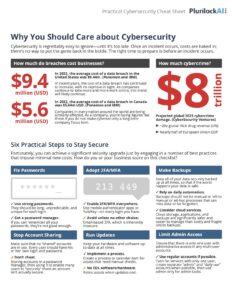In the modern digital landscape, where data is the lifeblood of businesses and individuals alike, protecting sensitive information from unauthorized access and leakage has become a paramount concern. Data Loss Prevention (DLP) emerges as a crucial strategy within the realm of cybersecurity to mitigate the risks associated with data breaches, safeguarding both personal privacy and organizational integrity. This deep dive will explore what Data Loss Prevention is, why it matters in today’s digital age, and delve into an in-depth analysis of its importance.
Understanding Data Loss Prevention (DLP)
Data Loss Prevention, often abbreviated as DLP, is a comprehensive approach aimed at identifying, monitoring, and mitigating the risks associated with unauthorized data exposure or leakage. It encompasses a set of technologies, policies, and practices designed to prevent sensitive data from leaving a defined perimeter, whether that’s a corporate network, a cloud environment, or an endpoint device. DLP operates by detecting and stopping unauthorized data transfers, ensuring that critical information remains within the boundaries of an organization’s control.
Why Data Loss Prevention Matters
The Growing Threat Landscape
In today’s interconnected digital landscape, data breaches have become a pervasive and damaging threat. Cybercriminals employ sophisticated techniques to infiltrate systems and extract sensitive data, leading to financial losses, reputational damage, and legal ramifications. The rise of remote work, cloud computing, and the Internet of Things (IoT) has expanded the attack surface, making traditional security measures inadequate. DLP emerges as a critical component of a multi-layered security strategy to combat these evolving threats.
Regulatory Compliance and Legal Requirements
As data privacy regulations such as the General Data Protection Regulation (GDPR) and the California Consumer Privacy Act (CCPA) come into effect, organizations are legally obligated to safeguard the personal information they collect and process. Failure to comply with these regulations can result in severe penalties. DLP plays a pivotal role in helping organizations meet these compliance requirements by preventing unintentional exposure of sensitive data.
Protection of Intellectual Property
For businesses, intellectual property (IP) is a valuable asset that sets them apart from competitors. Whether it’s proprietary algorithms, trade secrets, or innovative product designs, protecting intellectual property is essential for maintaining a competitive edge. DLP ensures that critical IP remains confidential and isn’t inadvertently leaked, whether due to insider threats or external attacks.
Safeguarding Customer Trust
A data breach can have long-lasting repercussions on customer trust and loyalty. Individuals are increasingly concerned about the security of their personal information, and organizations that fail to adequately protect this data risk losing customers to competitors that prioritize data security. DLP helps organizations demonstrate their commitment to data protection, thereby building and maintaining trust with their customer base.
Insider Threat Mitigation
Insider threats, whether intentional or accidental, pose a significant risk to data security. Employees, contractors, or partners with access to sensitive data can inadvertently or maliciously expose information. DLP solutions monitor user activity and identify suspicious patterns, allowing organizations to intervene before data is compromised.
Operational Continuity
Data breaches can disrupt business operations and lead to costly downtime. Recovery from a breach often involves substantial resources and time. By implementing DLP measures, organizations reduce the likelihood of breaches occurring in the first place, ensuring operational continuity and minimizing the potential for financial losses.
In-Depth Analysis of DLP’s Importance
Contextual Analysis for Effective Data Monitoring
DLP solutions rely on contextual analysis to accurately identify sensitive data and assess the risk associated with its movement. Contextual analysis takes into account factors such as data type, user behavior, and communication patterns. By understanding the context in which data is being transferred, DLP systems can differentiate between normal business operations and potential data breaches. This nuanced approach reduces false positives and ensures that legitimate data transfers are not needlessly blocked.
Adaptive Policies for Flexibility
Static security policies can be overly restrictive, impeding productivity and frustrating users. DLP systems have evolved to incorporate adaptive policies that adjust the level of security based on various factors. For example, a DLP system might allow certain data to be transferred outside the corporate network if it’s encrypted or if the recipient’s device is compliant with security standards. This adaptability strikes a balance between security and usability, accommodating the diverse needs of modern organizations.
Encryption and Data-in-Use Protection
Traditional DLP solutions primarily focused on data in transit (while being transferred) or data at rest (while stored). However, advancements in technology have enabled DLP to address data-in-use as well. This is particularly important in scenarios where data needs to be processed by applications while remaining encrypted. Modern DLP solutions can facilitate secure data processing, ensuring that even when data is being used, it remains protected from unauthorized access.
Network and Endpoint Integration
Effective DLP requires comprehensive coverage across an organization’s network and endpoints. Network-based DLP monitors data moving across the network perimeter, such as emails, file transfers, and web uploads. Endpoint DLP, on the other hand, focuses on data interactions occurring on individual devices. Integrating these two approaches provides a holistic view of data movement and enables early detection of potential breaches, whether they originate from external threats or internal users.
Machine Learning and Anomaly Detection
The dynamic and evolving nature of cybersecurity threats necessitates advanced techniques for threat detection. Machine learning and anomaly detection have found their way into DLP systems, enhancing their ability to identify unusual patterns of behavior that might indicate a breach. Machine learning algorithms analyze historical data to establish a baseline of normal behavior and can then detect deviations from this baseline, helping to identify insider threats and zero-day attacks.
Cloud-Centric DLP
The shift to cloud computing has transformed the way data is stored and accessed. Cloud-centric DLP solutions are designed to protect data within cloud environments, ensuring that sensitive information remains secure as it moves between on-premises infrastructure and cloud platforms. These solutions offer granular visibility and control over data, regardless of its location, mitigating the risks associated with cloud adoption.
Insider Threats and Behavioral Analytics
Insider threats, whether malicious or unintentional, are a significant concern for organizations. Behavioral analytics, an integral part of modern DLP, involves monitoring user activities and identifying deviations from established behavior patterns. By analyzing factors such as login times, data access frequency, and unusual data transfer volumes, DLP systems can flag potential insider threats before they escalate, enabling proactive intervention.
Conclusion
Data Loss Prevention (DLP) stands as a critical pillar in the realm of cybersecurity, serving as a bulwark against the rising tide of data breaches and leaks. Its multifaceted approach, encompassing technological solutions, policy frameworks, and behavioral analysis, empowers organizations to safeguard sensitive data, maintain regulatory compliance, and preserve customer trust. As the threat landscape continues to evolve, DLP’s importance will only grow, making it an indispensable component of comprehensive cybersecurity strategies in an increasingly digital world.

















